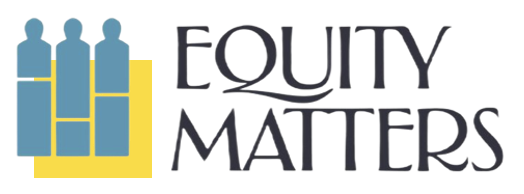Rekindling Connection: Strategies to Re-Engage Students After Winter Break
As the new year begins, educators face the unique challenge of re-engaging students who may have experienced learning loss, disconnection, or shifting priorities during the winter break. This period offers an invaluable opportunity to reset, reconnect, and realign with our students, meeting them where they are while guiding them toward success in the second half of the school year.
To truly support every learner, we must embrace strategies that center equity and a deep understanding of the diverse needs our students bring into the classroom. From recalibrating classroom norms to fostering meaningful family and community partnerships, the process of re-engagement is as much about empathy and inclusivity as it is about academic planning.
In this post, we’ll explore actionable strategies to:
Reignite student engagement after a break, addressing potential gaps in learning.
Design lessons and activities that reflect and honor the varied experiences of our students.
Use culturally responsive practices to build a strong and inclusive classroom culture for the months ahead.
Equip school leaders with tools to support their teachers in fostering equity-driven re-engagement.
Engage families and communities as allies in ensuring all students feel connected and supported.
Let’s uncover how we can transform this transition into a moment of possibility, laying the groundwork for meaningful growth and learning.
1️⃣ What are the best strategies for re-engaging students who may have experienced learning loss or disconnection during the break?
Dr. Terrance Scott, Equity Consultant
"To re-engage students after the holiday break, start by recognizing their humanity and their complex lives beyond the classroom—lives shaped by both joy and challenges. The goal isn’t just to get them back on track academically; it’s to help them feel seen, valued, and capable of greatness.
1. Relationship-building: Start with connection, not correction. Give students space to share their stories and experiences from the break. Use community-building activities like restorative circles or open discussions to rebuild trust and a sense of belonging.
2. Celebrate them: Design culturally relevant lessons that reflect students’ interests. Gamify it with tools like Kahoot and make it fun. Review what was covered before break to give students an opportunity to experience success early on. And celebrate the small wins and successes.
3. Be empathetic and set high expectations: Believe in their potential—no exceptions. Too often, educators lower the bar for students, whether they've been labeled as struggling or high performing. Revisit your classroom norms and expectations, and even offer the chance to update it to set them up for success.
4. A trauma-informed lens means recognizing that the holidays aren’t joyful for everyone. Some students may return to school carrying stress or trauma. Make your classroom a safe, consistent space where they can focus, feel respected, and rebuild their confidence.
5. Most importantly, bring the joy! Remember why you're here!!! Make learning meaningful and exciting!! Move beyond rote tasks and into lessons that connect to their lives, communities, and dreams. Students thrive when they see that what they’re learning matters.
Ultimately, re-engagement is about more than academics—it’s about affirming students’ humanity, honoring their brilliance, and creating an environment where they feel empowered to succeed. When you lead with love and high expectations, students will rise to meet them."
2️⃣ How can educators plan and deliver instruction that recognizes and addresses the diverse needs and experiences students bring with them after the winter break?
Dr. Sherrie Robbins, Equity Consultant
“One word: Connection!
Educators are unable to answer any parts of this question without first re-connecting with students! True connection requires intentionality. When educators re-connect with students after the break, they must do so with genuine enthusiasm and curiosity about the students experiences. It's also important that educators are willing to be vulnerable if they are asking that of them! Connection is a two-way street so educators are encouraged to share their own (appropriate) experiences, successes, and challenges. Last, educators need to enter the intentional re-connection with a heart toward celebrating diversity and practicing inclusivity. Educators need to make space where the unique experiences of all students are acknowledged and valued.
Intentional re-connection after allows educators to understand the needs and experiences students are bringing back with them after the winter break. With that knowledge, they can now plan and deliver student-centered, responsive instruction. "
3️⃣ What culturally responsive strategies can teachers use to reset classroom expectations and foster equity-driven learning environments for the second half of the year?
Mr. Marques Harris, Equity Consultant
"Due to not attending class for weeks, it is imperative for teachers to reestablish and reinforce their classroom expectations and norms from the onset of the start of a new semester.
To allow every student to show up as an individual, it may be good to allow students to share any traditions or cultural celebrations they engaged in during the break. This allows students to bring themselves into the learning environment. This also allows teachers to understand their students even more beyond the classroom walls which is the ultimate key to culturally responsive teaching.
Moving into more curriculum focused strategies, having data chats to begin the semester allows students to draw the correlation between their educational habits from the previous semester and the percent mastery of the taught standards. Including parents in these data chats and the follow up from them allows the teacher to build stronger relationships with the communities of each student individually.
Overall, acknowledging who their students are and continuing to include a student's broad supportive learning environment(in and outside of school), increases the likelihood of academic achievement. "
4️⃣ How can school leaders support teachers in re-engaging students equitably, ensuring that those who need extra support receive it?
Dr. Kristen Taylor, Lead Equity Consultant
"Re-engaging students after a long break can feel like a big challenge, but it’s also a huge opportunity. As school leaders, you have the power to create the right conditions that empower teachers to bring every student back on board—especially those who need extra support.
1. Teachers need to know exactly where their students are coming from—academically, socially, and emotionally. Give them the gift of clear, actionable data! Think quick, one-page snapshots of who’s been struggling with attendance, who’s shown signs of disengagement, and which students might benefit from a little extra TLC. By providing this kind of clarity, you’re helping teachers zero in on what matters most without getting overwhelmed. Imagine how powerful it feels to start with a clear map!
2. Relationships are everything. Teachers need time to rebuild those connections after a break. Simple things like a quick morning check-in or a “What’s one thing you loved about your break?” exit ticket can make a world of difference. As leaders, you can free up teachers to prioritize these moments by streamlining other demands. When teachers have time to focus on their students, magic happens.
3. Teachers don’t need a mountain of new strategies—they need a curated toolkit of ideas that really work. How about a "Re-Engagement Starter Kit"? Fill it with ready-to-go activities like collaborative group work, culturally responsive conversation starters, and scaffolding templates for those who need extra support. Restorative practices, inclusive classroom norms, and celebrating student voices are all part of this. When teachers feel equipped, they feel unstoppable. And when they feel unstoppable, students thrive.
4. Sometimes teachers need backup—and fast. Whether it’s for academic interventions, emotional support, or behavior challenges, having a clear and simple referral system makes all the difference. And don’t stop there! Make sure your intervention teams, counselors, and other support staff are visible, accessible, and ready to collaborate. This is about giving teachers the confidence that help is always just a step away.
5. Re-engaging students often means adjusting on the fly. Teachers need room to breathe and respond to their students’ immediate needs. That might mean revisiting foundational skills or spending extra time on a class project to reignite interest. Give teachers the green light to prioritize what their students need most. Loosen the reins on pacing and encourage creativity—you might just be amazed at what happens!
6. Teachers need to see and feel your support. When you’re in classrooms celebrating their work, offering encouragement, and reinforcing shared goals, you’re showing them they’re not in this alone. Even simple messages like, “I see how hard you’re working to reconnect with your students—it’s making a difference!” can mean the world. Your visible support creates momentum and keeps equity at the heart of everything.
By setting up these circumstances, you’re creating a school environment where teachers feel supported, students feel seen, and everyone is ready to take on the second half of the year with energy and purpose. The possibilities are endless—let’s make them happen!"
5️⃣ What are some innovative ways to involve families and communities in re-engaging students after the break?
Dr. Sonya Murray, CEO/Founder
To re-engage and accelerate student learning after winter break, schools can:
Host a flexible evening, "New Year Learning Launch," where families explore student work, participate in targeted skill-building stations, and receive personalized learning strategies from teachers.
Send home multilingual "Family Connection Cards" with subject-specific activities reinforcing key concepts and extending classroom learning through real-world applications.
Use school apps and texts to share weekly academic focus areas and specific ways families can support advanced learning concepts at home, including enrichment resources and extension activities.
Partner with local organizations to create community "Learning Spots" where students engage in accelerated learning through hands-on STEM projects, reading challenges, and math competitions with family support.
Provide families with progress monitoring tools and data-driven strategies to help identify and close learning gaps while challenging students ready to move ahead.







